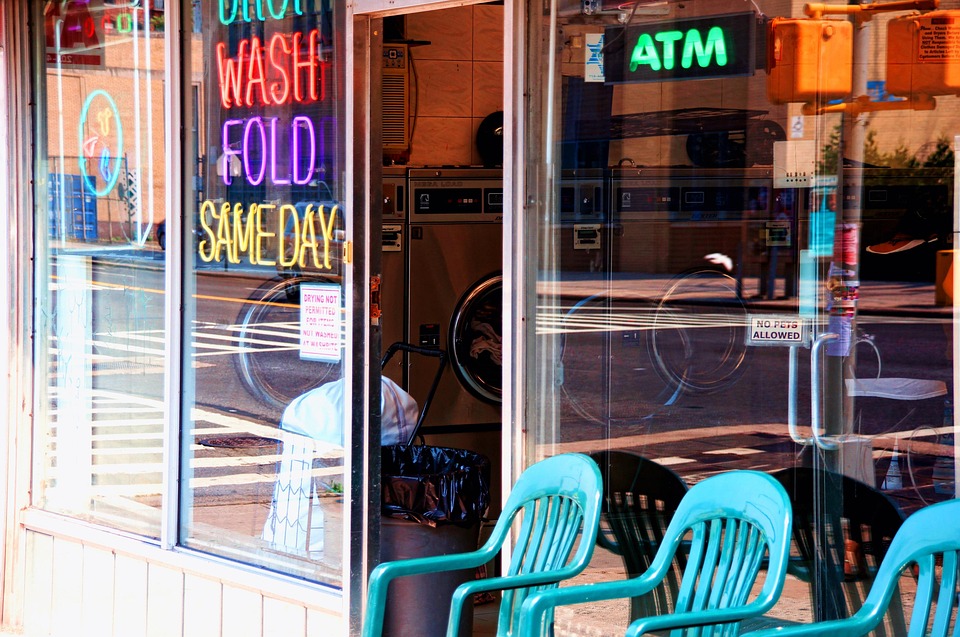Cashless laundry systems are transforming laundromats by replacing coins and cash with digital payment solutions. Customers can now pay using mobile apps, credit/debit cards, NFC wallets, QR codes, or reloadable laundry accounts. These systems are increasingly popular in self-service laundromats, university laundry rooms, multi-housing complexes, and hospitality facilities.
For laundromat owners, cashless systems streamline operations, reduce theft, and open new possibilities for loyalty programs and performance tracking. For customers, they provide faster, frictionless payments and a modern laundry experience.
Cashless technology makes laundromats smarter, faster, and more secure. With fewer coin jams, reduced labor costs, and real-time revenue tracking, owners can operate efficiently and focus on growth. Customers enjoy app-based controls, automated cycle alerts, and multiple payment options that fit today’s digital lifestyle.
What Is Cashless Laundry Technology?
Cashless laundry technology allows customers to operate washers and dryers without using physical coins. Key solutions include:
- Credit/Debit Card Readers: EMV-compliant card readers on machines or centralized kiosks make transactions fast and secure.
- Mobile Wallet Integration (Apple Pay, Google Pay, etc.): Tap-to-pay transactions offer convenience for tech-savvy users.
- QR Code and App-Based Activation: Customers can scan a QR code or use an app to pay, check balances, and get cycle alerts.
- Reloadable Laundry Cards or Accounts: Preloaded cards or accounts simplify repeat usage in campuses and multi-housing locations.
- Cloud-Based Dashboards for Owners: All transactions are recorded in a centralized system, giving owners insight into usage, revenue, and machine health.
Why Laundromats Are Moving to Cashless Systems
Laundromat owners are increasingly adopting cashless systems for several reasons:
- Reduced Labor and Maintenance Costs: Cash collection and coin handling require significant effort. Cashless systems reduce jams, service calls, and downtime.
- Lower Theft and Security Risks: Transactions are recorded securely in the cloud, minimizing theft and internal misuse.
- Faster Payments for Customers: App-based and tap-to-pay options eliminate the need for coins and streamline the user experience.
- Real-Time Tracking and Revenue Insights: Owners can monitor sales, machine usage, and trends to make informed decisions.
- Loyalty Programs and Marketing Integration: Cashless systems allow owners to implement rewards, promotions, and referral programs easily. For more ideas on growing your laundromat business and boosting customer engagement, check out our article on Strategies to Grow Your Laundromat Business in 2025
- Easier Multi-Location Management: Centralized dashboards simplify operations for chains or multiple locations.
Key Components of a Cashless Laundry System
To operate effectively, cashless systems typically include:
- On-Machine Card or Mobile Readers: Accept multiple payment types with easy-to-read displays and instructions.
- Central Kiosk or Value-Add Station: Optional units to load cards, check balances, or manage payments.
- Mobile Apps with Machine Integration: Show machine availability, allow remote starts, and send cycle alerts.
- Owner Dashboards: Track sales, machine activity, pricing, promotions, and service alerts from one interface.
Secure Payment Processing Backend: PCI-compliant gateways ensure encrypted and safe transactions.
Customer Benefits of Cashless Laundry
Going cashless offers tangible benefits to your customers:
- Convenient, Flexible Payment Options: Customers can use cards, phones, or QR codes without carrying coins.
- Faster Transactions and Fewer Delays: Digital payments reduce wait times and speed up the laundry process.
- Real-Time Machine Tracking and Cycle Alerts: Apps show machine status and notify customers when cycles finish.
- Loyalty Rewards and Stored Accounts: Customers can earn points or receive automatic promotions.
- Accessibility and Multilingual Support: Many systems include language options and accessible interfaces.
Safer Contactless Transactions: Reduces physical contact, which is preferred in post-pandemic environments.
What to Consider Before Going Cashless
When implementing cashless laundry systems, owners should evaluate:
- Machine Compatibility and Retrofit Needs: Not all washers and dryers support card readers; check with your vendor.
- Internet Connectivity: Stable Wi-Fi or Ethernet connections are required for real-time syncing and payments.
- Customer Communication: Clearly communicate how to use the new systems and provide instructions or assistance.
Security and Compliance: Choose PCI-compliant providers with strong encryption and secure data handling.
Final Thoughts
Cashless laundry technology is revolutionizing the laundry industry by replacing outdated, coin-based systems with fast, secure, and customer-friendly digital tools.
By offering more convenience, reducing labor, and improving operational control, cashless systems help owners scale smarter and serve customers better. From machine integration and loyalty programs to real-time reporting and automated promotions, digital platforms unlock new efficiencies and revenue streams. Customers love the ease, speed, and flexibility—while owners gain peace of mind and powerful management tools. Whether you’re upgrading a single store or building a multi-location brand, cashless laundry technology puts you ahead of the curve. The shift is no longer a trend—it’s a competitive necessity. If you want your laundry business to thrive in a cash-optional world, it’s time to go cashless.








